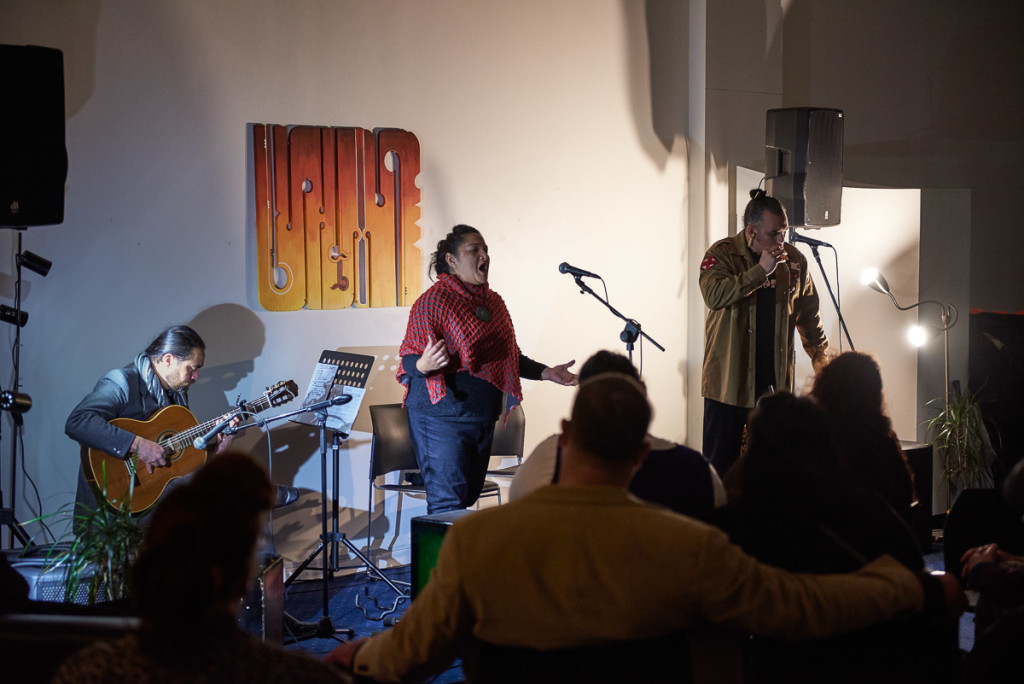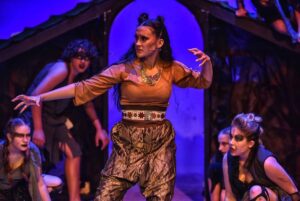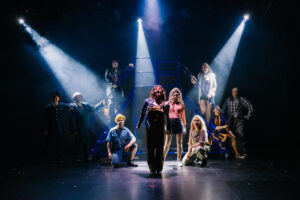Differences celebrated in Māori Music Month
From flamenco to taonga pūoro, the music was as varied as the audience at an event marking Te Marama Pūoro Waiata Māori.

Many Kiwi may be unaware that August is Te Marama Pūoro Waiata Māori (Māori Music Month) but a Navajo visitor now knows about the sounds available from Māori musicians.
Matthew Wheeler, from Tuba City Arizona’s Navajo reservation, was among the audience at a performance at Hamilton’s Creative Waikato on August 25.
A look at ngā waewae (feet) of the performers gave the audience clues about the music they would hear. From the polished black dress shoes of flamenco guitarist Noel Kaa Reid and the casual red hightops of Waimihi Hotere to the earthy bare feet of taonga pūoro tohunga (traditional Māori instruments expert) Horomona Horo, three Māori artists merged their different styles to celebrate Te Marama Pūoro Waiata Māori.
“I really enjoyed how they merged traditional Māori music with more contemporary instruments blending it into this new contemporary, modern style that I’ve never even seen before,” Wheeler said.
Busy musicians Reid, Hotere and Horo met as recently as two weeks ago to organise the programme for the evening determined to show their tautoko (support) for Te Marama Pūoro Waiata Māori, but Hotere said their collaboration had started years ago.
“It’s been 20 years in the making,” Hotere told the audience. That drew laughs as Horo and Reid looked at each other acknowledging the age of their musical careers.
Horo set the scene by calling everyone to attention with the alert sound of the double-mouthed pukaea (wooden trumpet), Hotere’s vocals enjoyed weaving as she felt so moved and Reid’s flamenco guitar danced and added moments of pace to the musical dialogue.
Horo, from Utakura, told stories of his life, of the history of taonga pūoro and of the natural roles ngā taonga once played in Māori lives. He told the stories, he sang the stories and he played the stories on ngā taonga puoro.
Hotere, from Cambridge, experimented with and relaxed into sounds, from clicking-throat sounds to trilly, rolling “r”s to a huge reverberating wail. She enjoyed the formation of vowels void of the restrictions of consonants as she sang a song without words.
Reid, from Ngāruawāhia, was accompanied by George Ohlson on cajon (a box drum played with the hands) as he added the more commonly recognised element of the evening, playing flamenco guitar.
His section began with a Billy T air as he recounted initially buying a flamenco CD only to get home and realise that he did not own a CD player. His music discussed the celebration of people’s resilience despite their circumstances, drawing comparisons between the Spanish and Māori.
People of varying nationalities were in attendance from Japanese, Māori and Pākehā to Navajo.
Wheeler had not heard of taonga pūoro before but enjoyed the event.
“What I had seen about the Māori people was the haka and I think actually a lot of indigenous tribes in the US like seeing the haka. They’re fascinated by it. Because it’s fearsome and for us it’s sort of a celebration of culture,” Wheeler said.
The evening had a natural quality. Entry was koha meaning that the attendees chose their fee, the trio had not organised a strict structure but allowed each other space to contribute freely.
But the final collaborative piece, in acknowledgement of renowned Māori writer Witi Ihimaera’s The Rope of Man, which also incorporated “Star Waka,” seemed well structured. Horo rapped the writer’s lines and he and Hotere harmonised parts while Reid and Ohlson’s flamenco rhythm added to the energy of the piece.




